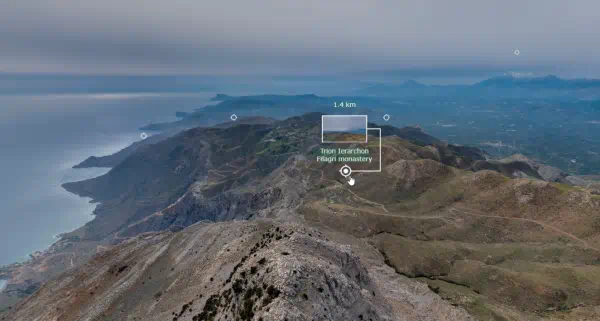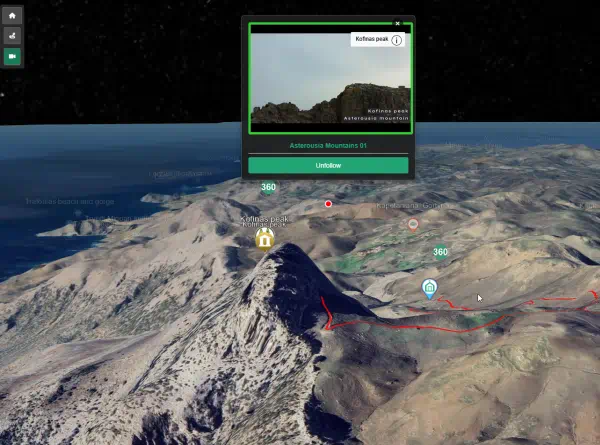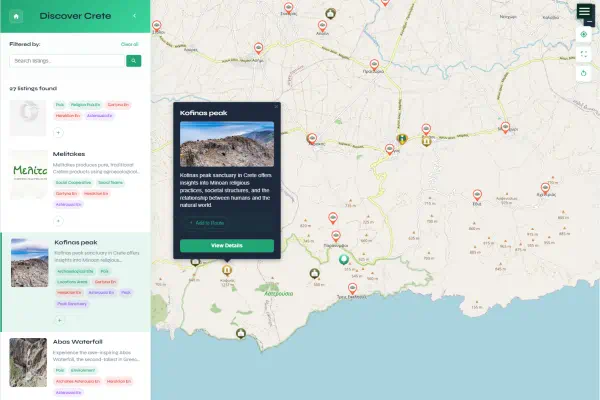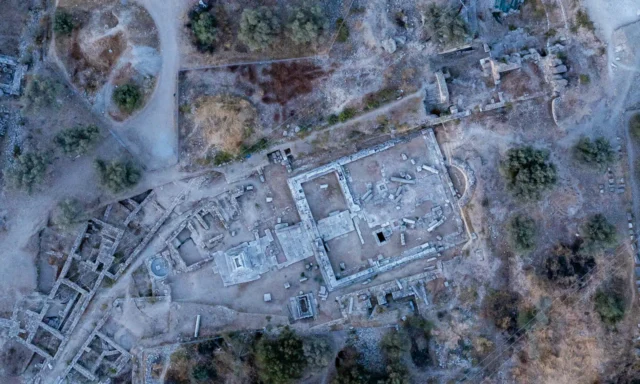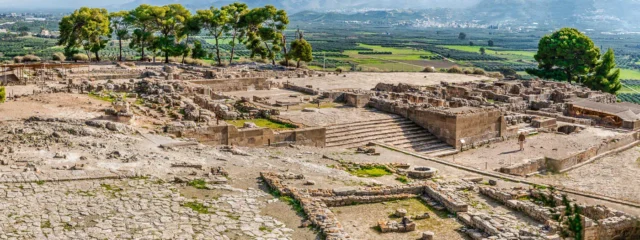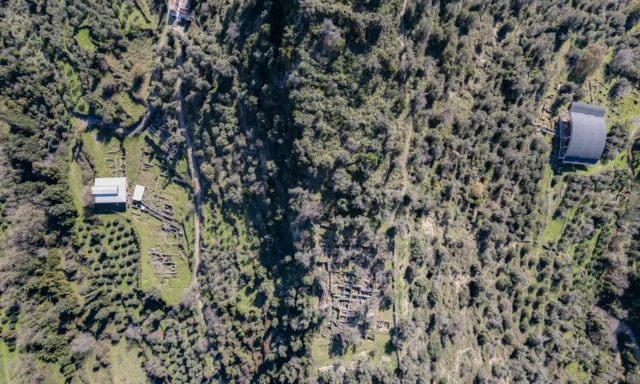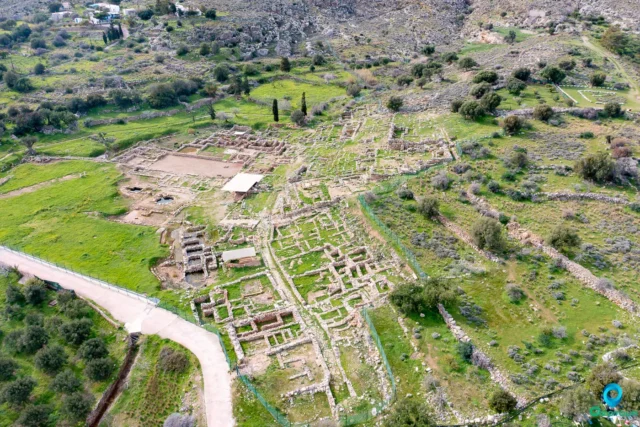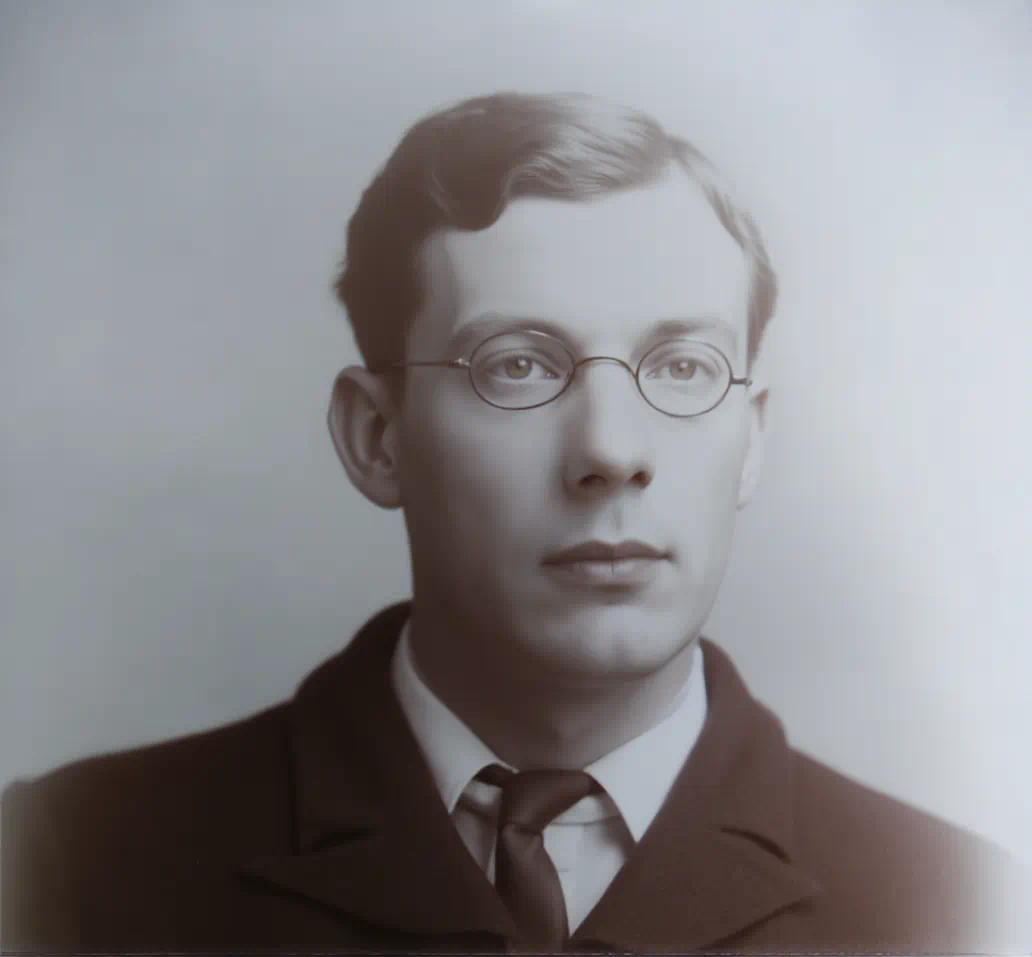Richard MacGillivray Dawkins
Biography of Richard MacGillivray Dawkins
Richard MacGillivray Dawkins (1871–1955) stands as a notable, if complex, figure within the landscape of early 20th-century British scholarship concerning Greece and the Aegean. His long and varied career traversed the disciplines of prehistoric archaeology, Modern Greek dialectology, and folklore studies, leaving distinct marks on each field. Associated prominently with the British School at Athens (BSA), including a significant period as its Director, Dawkins’s work, particularly his archaeological activities in Crete, forms an important component of the pioneering era of Minoan studies. His trajectory, however, moving from excavating ancient sites towards documenting living languages and traditions, also reflects broader intellectual shifts in the study of Hellenic culture during his lifetime. Active from the early 1900s through the First World War and holding a prestigious Oxford chair until 1939, his life and work offer a compelling case study in the evolving nature of engagement with the Greek world.
Formative Years and Education
Born on 24 October 1871 in Surbiton, London, Richard MacGillivray Dawkins hailed from a family with naval connections; his father was Rear-Admiral Richard Dawkins, and his mother was Mary Louisa McGillivray. He had several siblings, including sisters Annie, Mary, and Edith, and brothers Frank and John. His early education was somewhat atypical, initially undertaken at home by his mother, whom he remembered as “extremely competent and well read”. He subsequently attended a local grammar school and then Marlborough College. His time at Marlborough, however, was not fondly remembered; he felt himself a misfit, bullied for his red hair and lack of sporting prowess, and later reflected, “I was the last boy who ought to have been send to a public school”. Despite this dissatisfaction, it was during these years that he cultivated interests in both botany and classics, pursuits that would flourish later.
Dawkins did not proceed directly to university classics. Instead, he initially trained as an electrical engineer at King’s College, London. A significant turning point appears to have occurred following the death of his parents in 1896-97, which, combined perhaps with an inheritance or windfall, granted him the moral and economic freedom to redirect his future. At the relatively mature age of twenty-six or twenty-seven, he entered Emmanuel College, Cambridge, finally able to pursue his classical interests openly. He thrived in this environment, specializing in linguistics and graduating with a Double First in the Classical Tripos in 1902. He was later made a Fellow of Emmanuel College. This somewhat circuitous route into classical scholarship, starting with a technical discipline like engineering before moving to linguistics and archaeology, may have fostered the breadth of interest and methodological approaches seen in his later career, bridging meticulous documentation with cultural interpretation. His difficult experiences at public school might also connect to the distinct, somewhat eccentric personality noted by contemporaries later in his life.
His first direct encounter with Greece came during his Cambridge years, via a thirty-three-day trip in the Easter of 1900. While visiting famous archaeological sites, his published account of the journey notably focused more on the contemporary landscape, travel conditions, and local life than on detailed descriptions of ancient ruins, offering an early hint of the fascination with the living culture of Greece that would eventually dominate his scholarly output.
Forging an Archaeological Career in Crete
Following his Cambridge degree, Dawkins was awarded the Craven Scholarship, allowing him to spend the 1902-1903 academic year attached to the British School at Athens. Excited by Arthur Evans’s recent discoveries at Knossos, he travelled to Crete in early 1903. This arrival coincided with a pivotal moment for the island – the period of the autonomous Cretan State (1898-1913), which facilitated increased foreign archaeological activity – and the burgeoning excitement surrounding the unveiling of the Minoan civilization.
Palaikastro (1903-1906)
Dawkins’s initial archaeological fieldwork in Crete began at Palaikastro in the far east of the island. He arrived in March 1903 to work under the direction of R.C. Bosanquet, who had initiated the BSA excavations there the previous year. Dawkins himself later noted his relative lack of practical excavation experience at this point, beyond having studied the pottery finds from D.G. Hogarth’s earlier work at nearby Zakros in the Heraklion Museum. However, Bosanquet, described by Dawkins as having a ‘restless spirit’, soon departed for Athens, leaving Dawkins effectively in charge of the Palaikastro dig from his first season onwards. He continued to direct the excavations through the 1904, 1905, and final 1906 seasons.
The Palaikastro project under Dawkins was substantial. While the main focus was the extensive Minoan town site at Roussolakkos, the work also encompassed explorations in the surrounding area, including test pits and investigations at sites like Petsofa and Kastri, surveys for tombs (at Ta Ellinika, Agkathia, and along the river banks), and significantly, the excavation of a Neolithic settlement at Magasa. His work at Magasa, located on the plateau south of Palaikastro, involved clearing a rock shelter and an adjacent L-shaped house. This yielded important evidence for pre-Minoan Crete in the region, including characteristic pottery, stone celts, obsidian chips, and numerous bone tools, providing some of the first insights into Neolithic dwellings and material culture in East Crete. The results were published promptly in the Annual of the British School at Athens (ABSA) volume 11.
At the main Roussolakkos town site, Dawkins’s excavations contributed significantly to understanding the urban fabric of a major Minoan centre. Work uncovered well-built houses, often with impressive facades along the main street, internal courtyards, light-wells (similar to those in palatial structures), elaborate drainage systems, and evidence for workshops, including olive and wine presses. Notable finds included a rich corpus of Late Minoan pottery, particularly fine examples of the Marine Style, such as the famous octopus rhyton now in the British Museum, as well as evidence for Late Minoan III reoccupation, including larnax burials inserted into earlier contexts. The excavations also investigated the area of the later Temple of Dictaean Zeus within the Minoan town.
Crucially, the work at Palaikastro allowed Dawkins to engage directly with the developing framework of Minoan chronology. By the 1904 season, he was applying Arthur Evans’s terminology (Early, Middle, Late Minoan) and included an essay on chronology, based on the Knossos evidence, in the preliminary report. The stratified deposits at Palaikastro provided valuable comparative material for refining the pottery sequences that underpinned this chronological system. While preliminary reports appeared annually in ABSA, the final synthesis of the early Palaikastro finds, The Unpublished Objects from the Palaikastro Excavations, 1902-1906, co-authored with Bosanquet, was not published until 1923.
The Kamares Cave (Summer 1913)
In the summer of 1913, Dawkins led a BSA team to excavate the Kamares Cave, a large cavern situated high on the southern slopes of Mount Ida (Psiloritis). The cave had gained renown since the 1890s when distinctive Middle Minoan polychrome pottery – subsequently named ‘Kamares ware’ – found there by shepherds was brought to the attention of Iosif Hatzidakis, the influential Cretan archaeologist and founder of the Heraklion Museum. Although visited by the Italian archaeologist Antonio Taramelli in 1894 and later by Arthur Evans (who found it inaccessible due to snow), a systematic excavation had not been undertaken. Dawkins’s expedition, conducted at the suggestion of Hatzidakis , benefited from an unusually snow-free season, allowing for a more thorough investigation.
The team, which included M.L.W. Laistner (who co-authored the publication), J.P. Droop, W.R. Halliday, and others, focused on the cave’s vast main chamber. Trial pits outside the entrance yielded no ancient deposits. Inside, the richest finds came from amongst the large boulders covering the sloping floor at the rear of the outer chamber, the same area where the initial discoveries were reportedly made. The excavation yielded an enormous quantity of pottery fragments – recent estimates suggest around 17,000 fragments representing perhaps over 1,800 vessels were recovered by Dawkins and earlier explorers combined. The overwhelming majority belonged to the Middle Minoan II and III periods, comprising the classic Kamares ware style characterized by dark slip and elaborate polychrome (white, red, orange) decoration. Intriguingly, the pottery often appeared new or barely used but was almost invariably found broken, with fragments sometimes scattered across different parts of the cave. This has led to suggestions that the vessels were deliberately smashed as part of the ritual deposition, perhaps to prevent secular reuse. While predominantly Middle Minoan, a small deposit of Late Minoan I sherds and parts of Late Minoan III bügelkannen (stirrup jars) were found in a separate area, indicating continued, albeit reduced, use of the cave in later periods. Besides pottery, finds included fragments of terracotta figurines, stone and bone tools, animal bones, and significantly, six iron spearheads.
The excavation firmly established the Kamares Cave as a major Minoan cult site, active primarily during the Protopalatial period (Middle Minoan). The sheer volume and high quality of the pottery, much of which finds parallels at the nearby Palace of Phaistos (visible from the cave mouth), has fueled speculation about a special relationship between the palace and the cave sanctuary, possibly involving elite-sponsored rituals or offerings. The nature of the cult remains debated, with suggestions focusing on fertility goddesses like Eileithyia or Demeter, supported by finds of cereal grains. The results were published by Dawkins and Laistner in ABSA 19.
Plati, Lasithi (April-May 1914)
Dawkins’s final excavation campaign in Crete took place in the spring of 1914 at Plati, a village situated on the fertile Lasithi plateau, a large upland plain in east-central Crete. This work, like that at the Kamares Cave, was undertaken at the suggestion of Iosif Hatzidakis. A local discovery, reportedly inspired by a woman’s dream of finding a church bell which led instead to the uncovering of ancient walls and obsidian fragments, had been reported to the authorities.
The month-long excavation, involving a team that included J.P. Droop, R.M. Heath, and M.L.W. Laistner, and visited by the Ephor Stephanos Xanthoudides, revealed a significant Minoan settlement dating primarily to the Late Minoan I period, with evidence of later Late Minoan III activity. Three main architectural complexes (Blocks A, B, C) were identified. Block A, the most fully explored, consisted of a substantial building with multiple rooms arranged around inner courts, featuring porticoes, pithoi (large storage jars), and indications of an upper storey. Block B included a paved court, while Block C also showed signs of robust construction. The overall layout prompted Dawkins to speculate whether these blocks represented separate elite residences or perhaps formed parts of a single, larger, possibly even palatial, complex centered on an open court.
Finds included characteristic LM I pottery, some exhibiting both light-on-dark and dark-on-light decoration, fragments of large pithoi, some bearing stamped decoration, obsidian tools, and other domestic items. Evidence for later use came mainly from two small tholos tombs (circular tombs) located near the settlement. Tomb A contained pottery, while Tomb B yielded two clay larnakes (burial chests) of LM III type, containing skeletal remains, pottery (including stirrup jars), bronze mirrors, tweezers, and beads. The latest datable object found was a small fragment of a bronze relief plaque depicting a draped dancing figure, likely Geometric or Archaic, discovered near the surface. During his time at Plati, Dawkins also noted the presence of the rare plant Aristolochia microstoma, endemic to Crete, growing near the excavation site.
The Plati excavations were significant for demonstrating substantial Minoan occupation (primarily Neopalatial LM I, followed by LM III activity) within the Lasithi plateau, confirming the importance of this large, fertile highland basin during the Bronze Age. The architectural remains offered insights into settlement patterns and building techniques in this distinct inland environment, complementing the picture emerging from coastal towns and palaces. The findings were published by Dawkins in ABSA 20.
Dawkins’s archaeological work in Crete, therefore, spanned different regions (east, central, Lasithi) and site types (town, cave, highland settlement), contributing valuable data from the Neolithic through the Late Minoan periods. While perhaps lacking the single monumental focus of Evans at Knossos, his excavations broadened the understanding of Minoan civilization’s reach and diversity across the island. His engagement with chronology, applying and testing Evans’s framework with evidence from Palaikastro, demonstrates his participation in the core intellectual project of defining Minoan culture. Furthermore, the fact that both the Kamares and Plati projects were initiated following suggestions from Hatzidakis underscores the collaborative dynamic that often existed between the foreign schools and the Cretan archaeological authorities during this pioneering period. The practice of publishing preliminary results relatively quickly in the BSA’s Annual, even if final reports took longer, seems to have been standard procedure.
Summary of R.M. Dawkins’s Key Archaeological Fieldwork (c. 1903-1914)
Site | Region | Dates of Involvement | Role | Key Findings / Significance (Brief Summary) |
Palaikastro (incl. Magasa) | East Crete | 1903-1906 | Excavator, Director (from 1903) | Minoan town (Roussolakkos), Neolithic site (Magasa), Chronology, Pottery (Marine Style), LMIII burials, Temple of Dictaean Zeus. |
Kamares Cave | Central Crete (Mt. Ida) | 1913 | Director/Excavator (with Laistner) | Major Middle Minoan cult site, Kamares ware corpus, Figurines, Ritual deposition evidence. |
Plati | East-Central Crete (Lasithi) | 1914 | Director/Excavator | Minoan highland settlement (LM I), Architecture, LMIII tholos tombs/larnakes. |
Artemis Orthia | Laconia, Mainland Greece | 1906-1910 | Director (BSA Excavation Lead) | Major sanctuary excavation, Geometric-Archaic finds (ivories, masks, pottery), Temple sequence. |
Phylakopi | Melos, Cyclades | 1911 | Director (BSA Excavation Lead) | Re-investigation of Bronze Age settlement, Stratigraphic refinement based on Cretan/mainland finds, Integration of new Aegean Bronze Age knowledge. |
Rhitsona | Boeotia, Mainland Greece | (During Directorship 1906-14) | BSA Director (Supported Burrows’ work) | Facilitated BSA involvement in Boeotian cemetery excavations. |
Directorship of the British School at Athens (1906-1914)
In 1906, Richard Dawkins succeeded R.C. Bosanquet as Director of the British School at Athens, a prestigious position he held until his resignation in 1914. (Note: While most sources indicate a tenure ending in 1914, matching the context article, a few state 1913). This period was marked by significant archaeological activity undertaken by the School across several regions of Greece.
Under Dawkins’s leadership, the BSA embarked on major new fieldwork initiatives while continuing or concluding others. Perhaps the most significant project initiated during his directorship was the large-scale excavation of the Sanctuary of Artemis Orthia at Sparta, which Dawkins personally led from 1906 to 1910. This excavation became a flagship project for the School, uncovering vast quantities of Geometric and Archaic material, including the famous ivory carvings and terracotta masks, although the final publication was considerably delayed, appearing only in 1929. Alongside the Sparta excavation, the BSA also conducted a survey of the surrounding region of Lakonia.
Another key strategic decision made during Dawkins’s tenure was the return to the prehistoric site of Phylakopi on the island of Melos for a supplementary excavation season in 1911. Phylakopi had been the scene of the BSA’s first major Aegean Bronze Age excavation (1896-99), completed before the revolutionary discoveries in Crete had fully emerged. Dawkins explicitly justified the 1911 return by the need to re-evaluate the Phylakopi sequence and finds in light of the new understanding of the Aegean Bronze Age derived from Knossos, Palaikastro, and recent mainland work. This undertaking, which Dawkins also led, demonstrates a conscious effort to integrate new knowledge and refine earlier conclusions, reflecting a growing methodological self-awareness within the discipline and under his direction.
In Crete, BSA activity continued with the final season at Palaikastro in 1906 , followed by Dawkins’s own later campaigns at the Kamares Cave (1913) and Plati (1914). The School also supported work elsewhere, such as Ronald Burrows’ excavations at Rhitsona in Boeotia.
Notably, during his time as Director, Dawkins was simultaneously pursuing his burgeoning interests in Modern Greek language and culture. He undertook linguistic fieldwork in Cappadocia in the summers of 1909, 1910, and 1911 and explored the islands of the Dodecanese and Cyclades with A.J.B. Wace in 1906-1907, studying dialects, folklore, and collecting embroideries. This parallel activity suggests that his personal intellectual trajectory was already broadening significantly beyond traditional archaeology. While the BSA’s primary fieldwork under his leadership remained archaeological, his own diverse interests likely contributed to a scholarly environment receptive to a wider range of Hellenic studies. Compared to his immediate predecessors, Hogarth and Bosanquet, whose BSA work was heavily focused on Crete and the Bronze Age, Dawkins’s directorship saw a major investment on the mainland (Sparta), a strategic re-assessment of Cycladic archaeology (Phylakopi), and the accommodation of his own pioneering ethnographic and linguistic research. This indicates a dynamic period for the School, with a potentially wider geographical and disciplinary horizon.
From Ancient Sites to Living Traditions
A defining characteristic of Richard Dawkins’s long career was his gradual but decisive shift away from prehistoric archaeology towards the study of Byzantine and particularly Modern Greek language, folklore, and culture. This transition was not abrupt but appears to have begun during his earliest years in Crete. A striking early example is his documented effort in 1904, amidst the Palaikastro excavations, to record no fewer than 953 mantinades (traditional rhyming couplets, often sung) recited to him by local workmen over three evenings. This demonstrates an early and deep engagement with the living culture alongside the ancient remains.
This burgeoning interest led him to undertake pioneering fieldwork beyond Crete. His expeditions to Cappadocia in central Asia Minor during the summers of 1909, 1910, and 1911 were particularly significant. He was the first scholar to systematically document the unique Greek dialects spoken in isolated villages like Sille, Pharasa, and Axo (Hasaköy). His work involved not only linguistic recording but also collecting folktales, which he valued as preserving conservative forms of the dialects. Collaborating with W.R. Halliday in 1911, he amassed a wealth of material just years before the Greco-Turkish War and subsequent population exchange led to the displacement of these Greek-speaking communities, making his research an invaluable, and tragically final, record of these dialects in their homeland. This research culminated in his seminal publication, Modern Greek in Asia Minor (1916), described as a “magnum opus”. He also pursued dialect and folklore studies in the Aegean islands, notably with Wace in the Dodecanese and Cyclades, building on earlier work in Karpathos, and attempted to study Pontic Greek dialects in 1914 before the outbreak of World War I intervened. Based on his wide-ranging data, he proposed a fundamental east-west division in Modern Greek dialects.
Dawkins also became a major figure in the collection and study of Greek folktales. At a time when interest in the subject among Greek scholars was limited, his work was particularly important. He emphasized methodological rigor, stressing the need for accurate field recording and detailed contextual information about informants, locations, and performance situations. When working with existing collections like the Zarraftis manuscript from the Dodecanese, he meticulously sought internal evidence and drew on comparative data to reconstruct the social context of the storytelling.
His immersion in modern Crete deepened during the First World War, when he served from 1916 to 1919 as an intelligence officer with the Royal Naval Volunteer Reserve, based on the island. This extended stay provided the opportunity for extensive travel and observation, directly informing a major book project he began planning during this time. This ambitious work aimed to cover the medieval and modern history, architecture (churches, monasteries), topography, botany, folklore, traditional crafts (beekeeping, olive pressing, salt production), and even unique local practices like the collection of labdanum gum from shrubs (and goat beards) near Sises. Although he drafted 32 chapters, arranged geographically from west to east, the book was never completed. This wartime experience, however, clearly solidified his shift towards the ethnographic and historical study of the more recent Cretan past.
Following the war, Dawkins’s academic career fully reflected this change in focus. In December 1919, he was elected the first Bywater and Sotheby Professor of Byzantine and Modern Greek Language and Literature at the University of Oxford, a chair he held until 1939. In 1922, he became a Fellow of Exeter College, Oxford, while also holding an honorary fellowship at his Cambridge alma mater, Emmanuel College. He served as president of the Folklore Society from 1928 to 1930. His later years saw the publication of major folklore collections, including Forty-Five Stories from the Dodecanese (1950), Modern Greek Folktales (1953), and the posthumously published More Greek Folktales (1955). Other notable later works included The Monks of Athos (1936). This trajectory demonstrates that Dawkins’s move away from archaeology was not a withdrawal from scholarship, but a redirection towards fields where he made foundational and lasting contributions, particularly in preserving linguistic and cultural heritage that was rapidly disappearing.
Personal Dimensions
Beyond his academic achievements, Richard MacGillivray Dawkins was known as a distinct and somewhat eccentric personality. The writer and illustrator Osbert Lancaster provided a memorable, if perhaps caricatured, description: “No eccentric professor of fiction could possibly hold a candle to the reality of Professor Dawkins whose behaviour and appearance placed him… in a class by himself. Ginger-moustached, myopic, stooping, clad in one of a succession of suits which he ordered by postcard from the general store of a village in Northern Ireland, he always betrayed his whereabouts by a cackling laugh of great carrying power.” Lancaster even claimed to have once seen Dawkins perched high in a chestnut tree on the grounds of Exeter College, “hooting like a demented macaw”. Despite this eccentricity, or perhaps partly because of it, he moved in interesting circles, acquainted with figures like Evelyn Waugh and Ronald Firbank. He was known for his generosity towards the difficult writer Baron Corvo (Frederick Rolfe), although Corvo’s own writings portrayed Dawkins in a less flattering, critical light, referring to him as “the blubbler-lipped Professor of Greek”. A.L. Rowse later interpreted some of Corvo’s comments and Dawkins’s associations as suggesting he was queer, though this remains an interpretation based on limited and potentially biased sources.
Dawkins possessed interests beyond his core academic pursuits. His fascination with botany, first kindled at Marlborough College, remained a lifelong passion. In 1907, he inherited the Plas Dulas estate in Llanddulas, North Wales, from a cousin. There, he actively experimented with importing and cultivating plants, and even displayed archaeological antiquities within the garden landscape. He was also an early collector of watercolours by the artist Edward Lear. His interest in the churches and monasteries he studied was not purely architectural or historical; he seemed to appreciate the structure and order that religion provided in people’s lives. This combination of unconventionality, broad intellectual curiosity extending to the natural world and art, and a somewhat non-conformist career path paints a picture of a unique individual who did not fit neatly into the academic mold of his time.
Regarding his family, Richard MacGillivray Dawkins was the son of Rear-Admiral Richard Dawkins and Mary Louisa McGillivray and had several siblings. The user query for this report specifically requested mention of two archaeologist children. However, the available research material contradicts this. Genealogical records and biographical summaries consulted explicitly state that Richard MacGillivray Dawkins died “unmarried” in Oxford on 4 May 1955, aged 83. Sources detailing his immediate family list parents and siblings, but make no mention of a spouse or children. It seems highly likely that the query stems from confusion with the prominent evolutionary biologist Professor Richard Dawkins (Clinton Richard Dawkins, born 1941), who is a different individual entirely. The biologist Richard Dawkins is indeed the son of Clinton John Dawkins and has a daughter, Juliet Emma Dawkins, but he is not the subject of this report, Richard MacGillivray Dawkins the archaeologist and linguist. Therefore, based on the provided evidence, R.M. Dawkins did not have children.
R.M. Dawkins’s Enduring Legacy
Richard MacGillivray Dawkins left a complex and multifaceted legacy across several fields of Hellenic studies. His contributions to Cretan archaeology during the pioneering era were substantial. Through his direction of the later Palaikastro excavations , his investigation of the Kamares Cave , and his uncovering of the settlement at Plati , he added significantly to the understanding of Minoan chronology, regional variation, and the diversity of site types (town, sacred cave, highland settlement) on the island. His work helped solidify the foundations laid by Evans and others, providing crucial data sets, particularly regarding pottery sequences like Kamares ware and the character of Minoan life outside the major palaces.
Beyond Crete, his leadership of the major BSA excavations at the Sanctuary of Artemis Orthia in Sparta brought to light one of the most important assemblages of Archaic material culture from mainland Greece. His decision to re-investigate Phylakopi demonstrated a commitment to methodological refinement and the integration of new knowledge.
However, while his archaeological work was significant, his most unique and perhaps most enduring contributions lie in the fields he embraced later in his career: Modern Greek linguistics and folklore. His work on the Greek dialects of Cappadocia, documented in Modern Greek in Asia Minor, stands as a foundational achievement, preserving invaluable linguistic data on the verge of extinction. He is recognized as a pioneer in the systematic collection and study of Modern Greek folktales, advocating for rigorous methodology and contextual analysis at a time when these were not always prioritized.
Dawkins’s career embodies a bridge between the ancient and modern Greek worlds, reflecting an increasingly holistic appreciation for the continuity and evolution of Hellenic culture that gained traction during the 20th century. His meticulous approach to data collection and documentation, whether excavating pottery, recording dialectal forms, or transcribing folktales, provides a consistent thread throughout his diverse scholarly activities. While the delayed publication of some of his major archaeological work, such as Sparta, may have somewhat muted its immediate impact relative to the scale of the fieldwork, his contributions across archaeology, linguistics, and folklore secure his place as a significant, albeit sometimes unconventional, figure in the history of British engagement with the rich tapestry of Greece’s past and present. Within the specific narrative of early Cretan archaeology, his work at Palaikastro, Kamares, and Plati remains essential for understanding the island’s Minoan civilization beyond Knossos.

